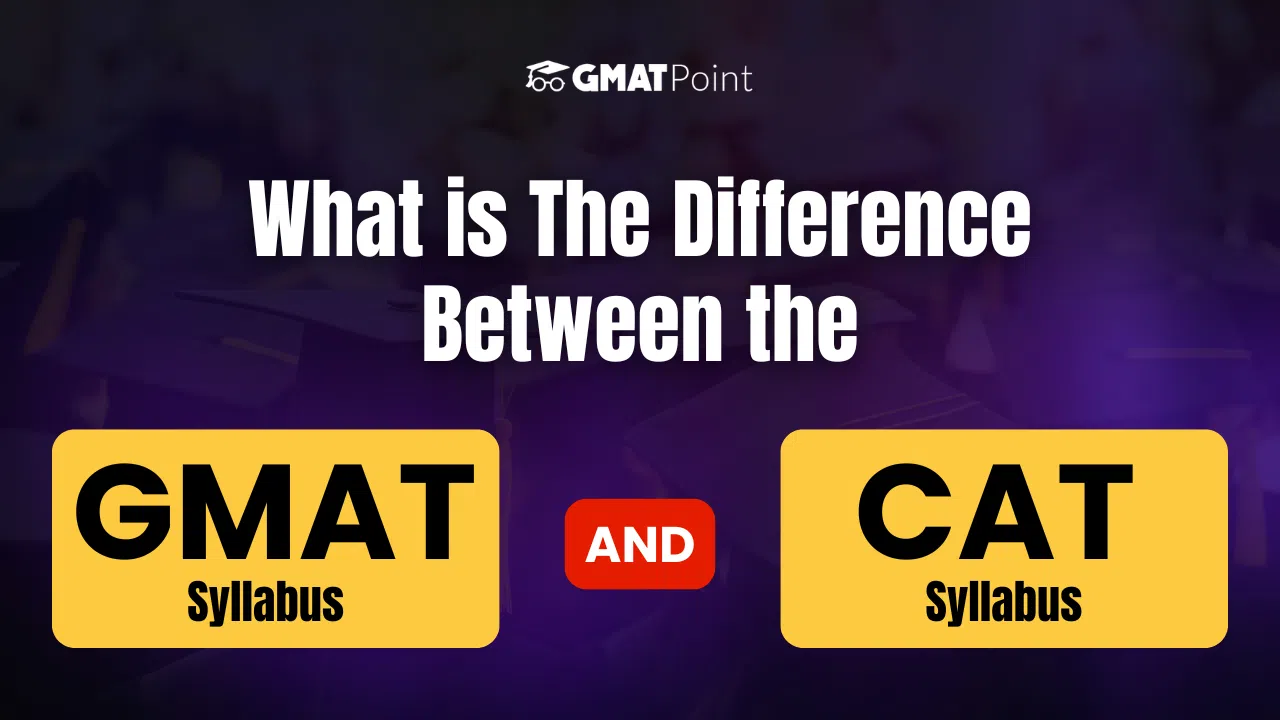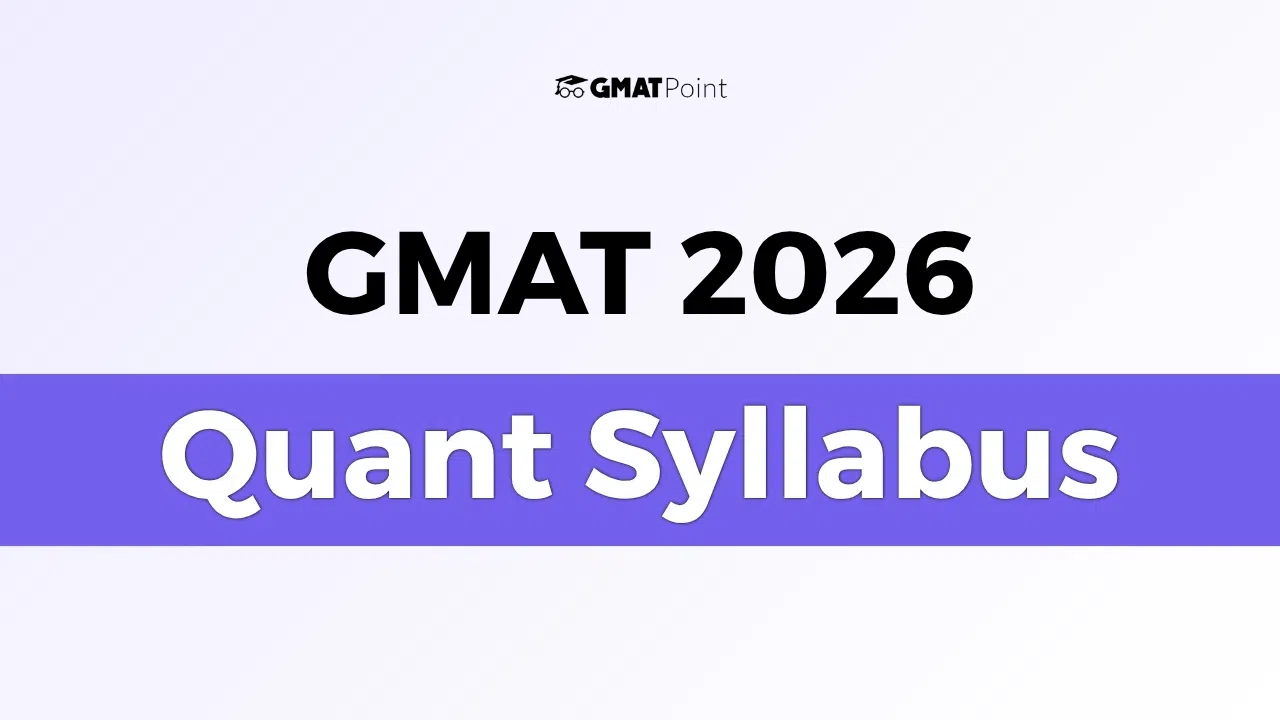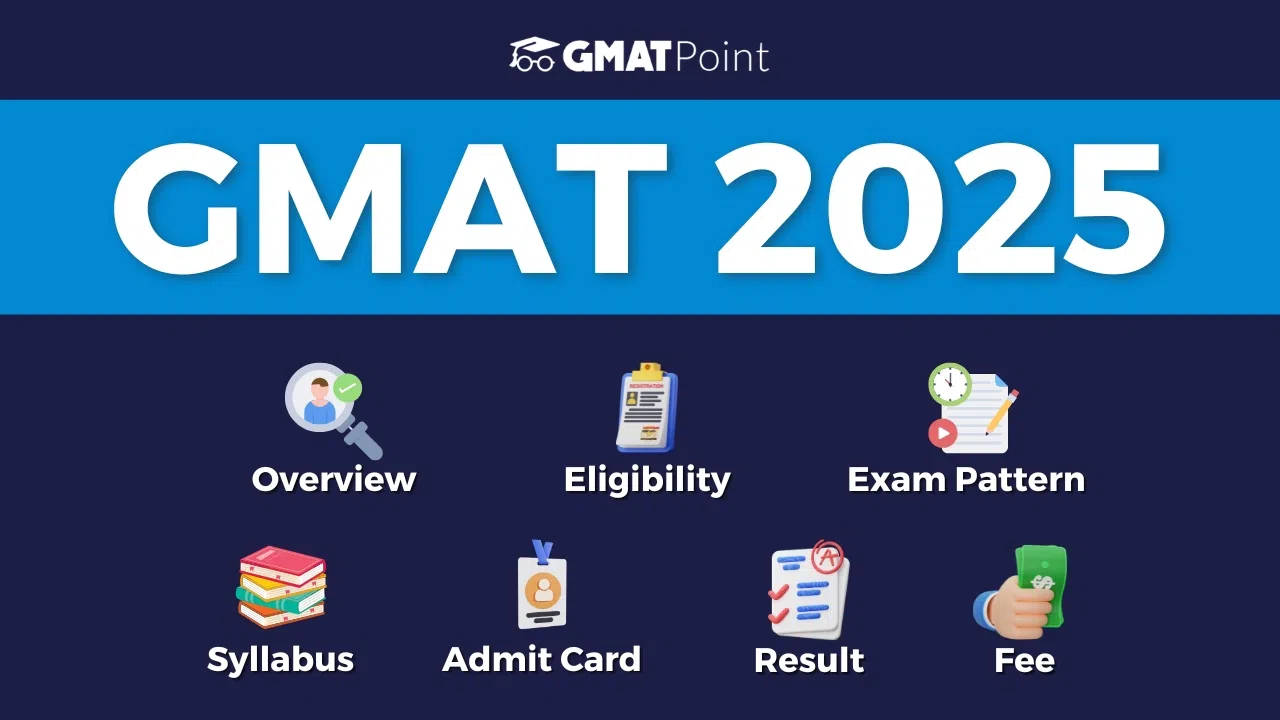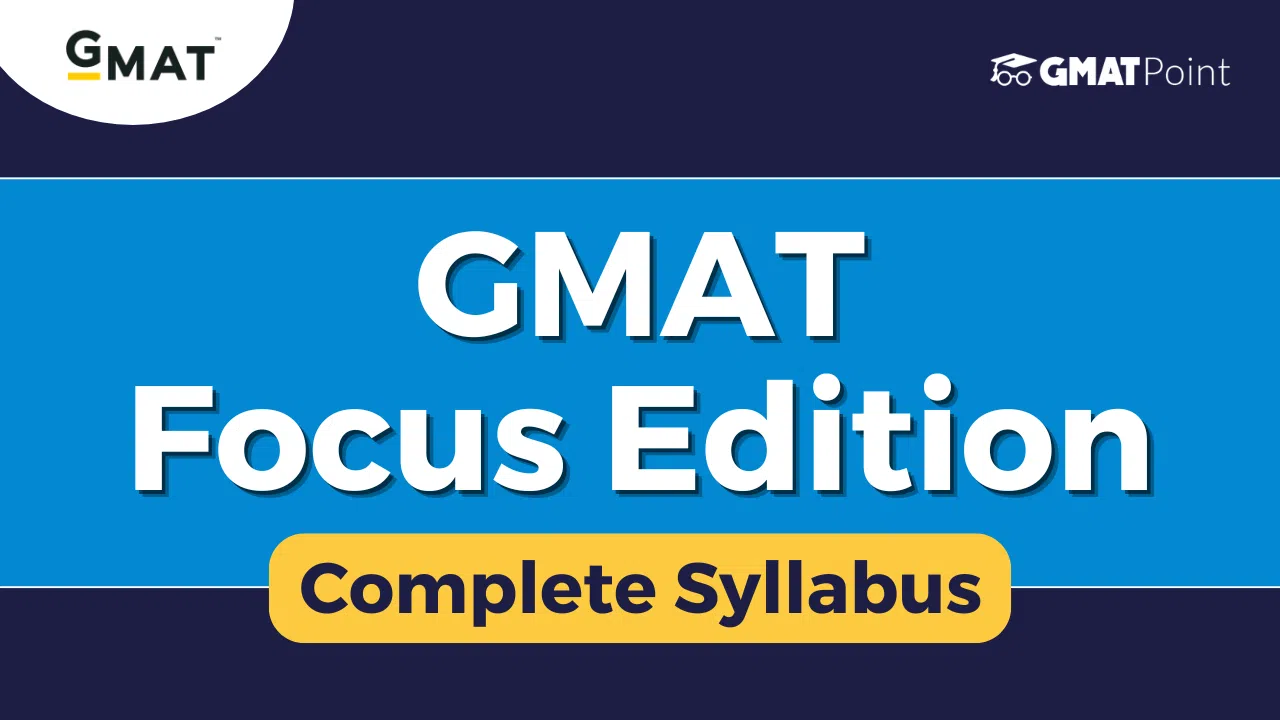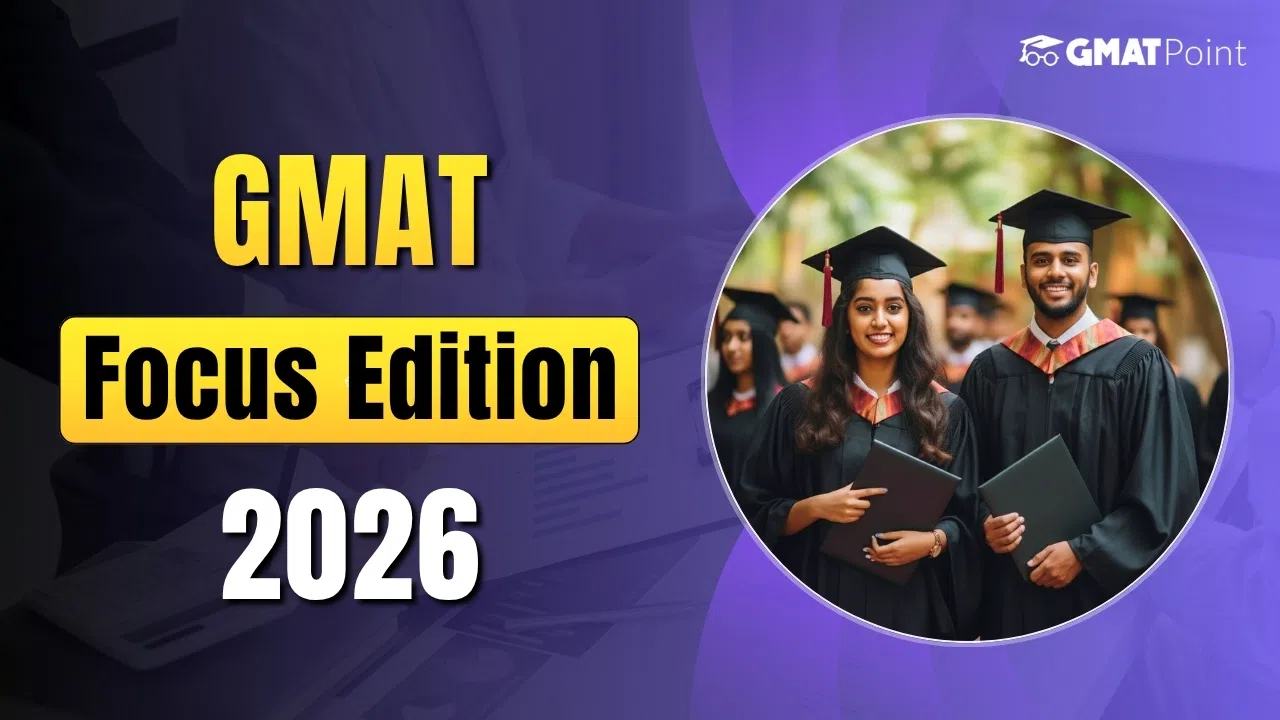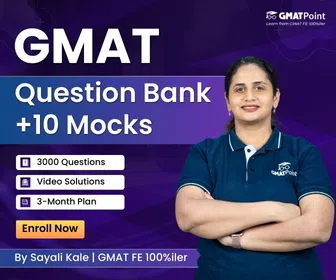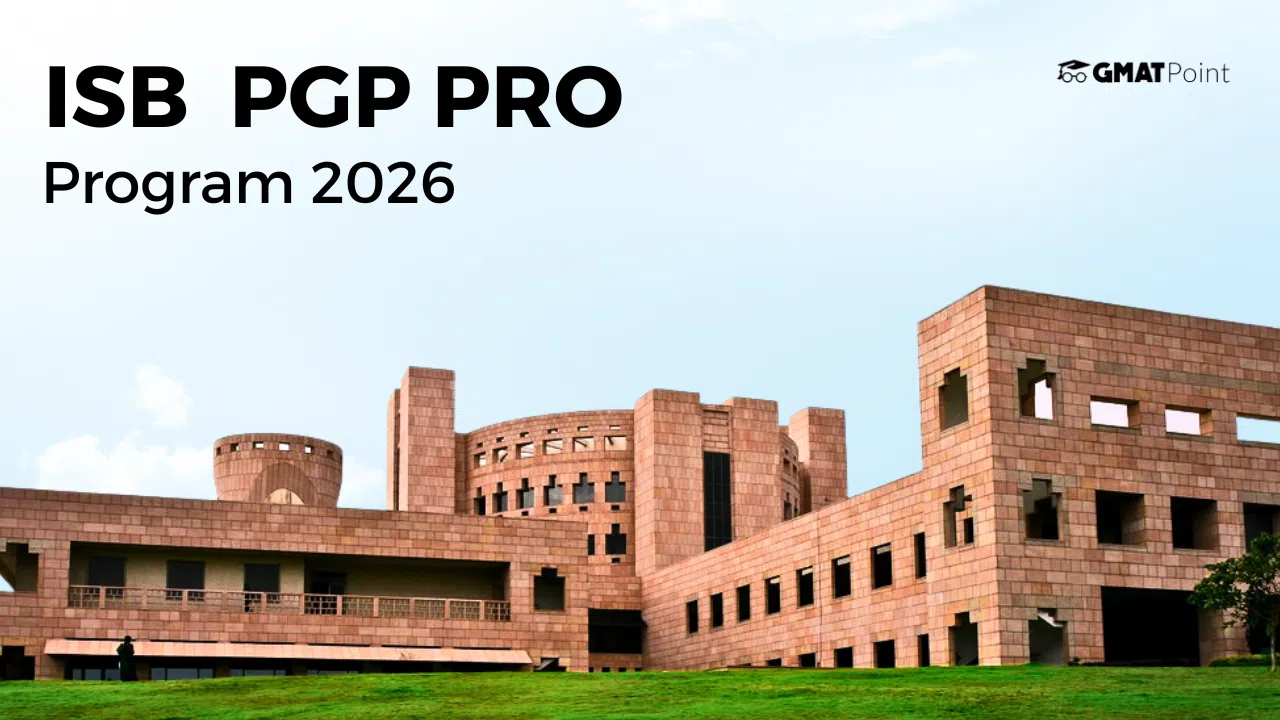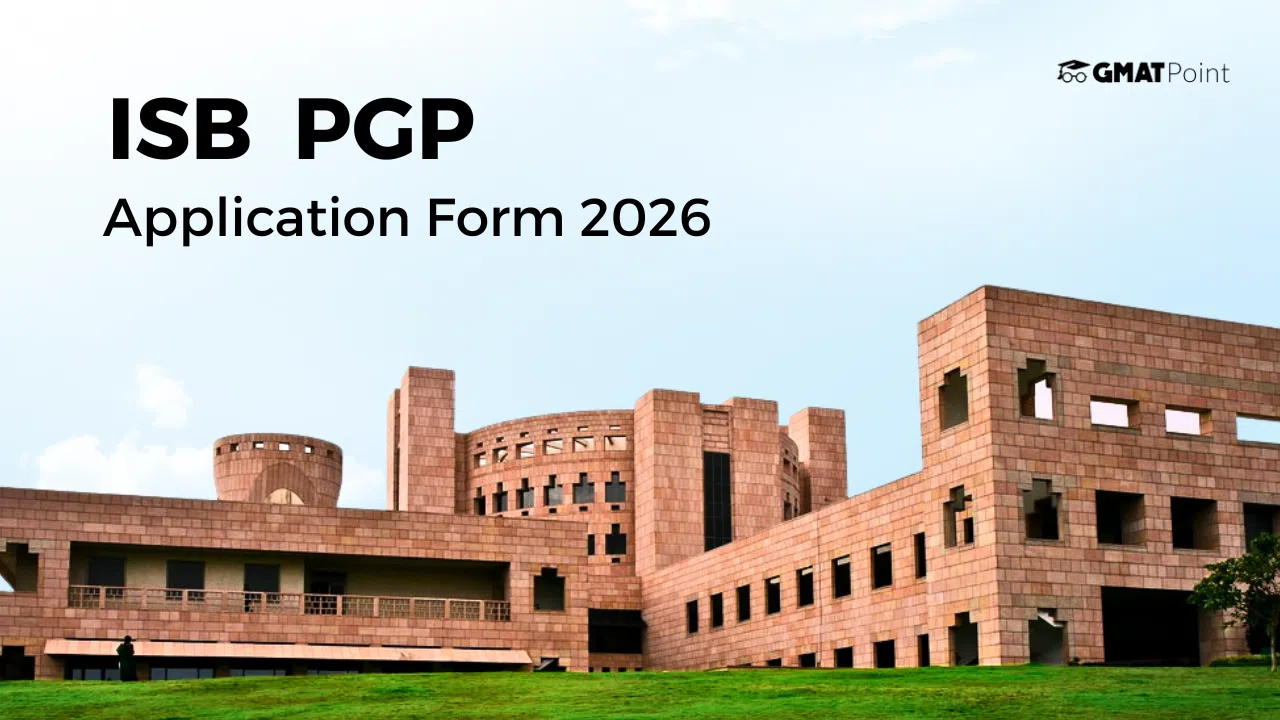GMAT and CAT are two of the biggest dilemmas for a candidate aspiring to pursue an MBA. While both serve a similar purpose, their syllabus are different, reflecting the unique expectations of global and Indian Business schools. Both are the most popular MBA entrance exams in India, having a similar syllabus but different approaches. Additionally, the difficulty levels of the GMAT and CAT are different.
So, here is a detailed difference between the GMAT and CAT exam syllabus.
GMAT vs CAT Syllabus
In the CAT syllabus and the GMAT syllabus, the subjects covered and the kinds of questions asked in each exam are different. English language, logical reasoning, data interpretation, and mathematics are all covered in both exams. In the CAT exam, each section focuses on a specific subject area. For example, the VARC section mainly tests verbal ability and reading skills, while the Quantitative Aptitude section assesses mathematical ability. On the other hand, the GMAT focus edition contains each section with a mix of question types that evaluate various skills. For instance, the two-part analysis questions in the Data Insights section can measure quantitative, verbal, or even a combination of both skill sets.
Is the GMAT and CAT Syllabus the Same?
Definitely not, the CAT syllabus and GMAT syllabus are different. Both of the exam syllabus are different in the aspects of difficulty, structure and specific topics are covered in each section.CAT focuses more on problem-solving in verbal and logical reasoning, while GMAT blends reasoning with precision and data analysis with a global standard.
Read More: GMAT Quant Syllabus 2026, Important Topics, Preparation Tips
GMAT vs CAT: Key Differences
The two common entrance examinations for getting enrolled in an MBA college include CAT and GMAT. The key difference between the CAT and GMAT is that the latter is a global exam, and it will help you pursue your master's degree abroad, while some Indian schools that accept GMAT scores include ISB. On the other hand, CAT is only accepted by Indian business schools, such as IIMs, SP Jain, MDI and ISB Hyderabad.
Let's dive into the detailed differences between CAT and GMAT
Details | GMAT | CAT |
Abbreviations | Graduate Management Admission Test | Common Aptitude Test |
Conducting body | Graduate Management Admission Council (GMAC) | India's top IIM’s |
Mode of exam | Online mode either at exam centres or at home itself | Online mode only at exam centres |
Exam frequency | Multiple times in a year (But candidate can attempt 5 times in a year) | Single time in a year |
Sections | 3 sections
| 3 sections
|
Question type | Multiple choice questions (MCQ) | Multiple choice questions (MCQ) and Type in the answer (TITA) |
Marking scheme | No Negative mark | +3 for correct answer -1 for wrong answer |
Total marks | 805 | 204 |
Score validity | Five years | One year |
Read More: GMAT Study Material 2025, Mock Tests, Sample Papers PDF
GMAT Syllabus: Detailed Breakdown
The GMAT syllabus consists of 3 sections, namely, Verbal Reasoning, Quantitative Reasoning and Data Insights, with a 45-minute duration for each section.
Section | Number of Questions | Time Duration |
Quantitative Reasoning | 21 | 45 minutes |
Verbal Reasoning | 23 | 45 minutes |
Data Insights | 20 | 45 minutes |
Total | 64 | 2 hours 15 minutes (plus an optional 10-minute break) |
GMAT Quantitative Reasoning Syllabus:
In the GMAT Focus Edition, the Quantitative Aptitude section has 21 multiple-choice questions. These questions are from algebra and arithmetic. Below are important topics from quantitative reasoning
Arithmetic Topics | Algebra Topics |
Multiples and Factors | Monomials & Polynomials |
Number Properties | Functions |
Fractions and Decimals | Exponents & Roots |
Percentages | Quadratic Equations |
Averages | Inequalities & Basic Statistics |
Ratios and Proportions | Algebraic Expressions & Equations |
Mixtures and Allegations | Permutations and Combinations |
Pipes, Cisterns, and Work-Time | Arithmetic and Geometric Progressions |
Speed, Time, and Distance | Set Theory |
Simple & Compound Interest | Descriptive Statistics |
Probability | - |
GMAT Verbal Reasoning Syllabus:
In the GMAT Focus Edition, the Verbal Ability section has 23 multiple-choice questions. These questions are from reading comprehension and critical reasoning. Below are important topics from verbal ability
Reading comprehension
In this topic, questions have a 350-word passage followed by multiple-choice questions.
based on the main idea, supporting ideas, inferences, context, style, and tone.
Critical reasoning
Critical Reasoning questions in the GMAT verbal section are based on short passages (usually under 100 words), followed by choices. These questions assess how well you can break down an argument, identify assumptions, and evaluate logic based on the information provided.
GMAT Data Insights Syllabus:
The Data Insights section of the GMAT exam structure consists of 20 questions to be answered in 45 minutes. This section measures your ability to interpret and analyse data. An on-screen calculator is available for all questions in this section. The GMAT syllabus for Data Insights contains the following types of questions:
Data Sufficiency: Based on two statements of data, pick the answer choice that has enough information to solve the problem.
Multi-Source Reasoning: Synthesise, compare, interpret or apply the information presented in written passages, tables, graphs, diagrams, and other types of visual representation.
Table Analysis: Determine statistics, ratios, proportions or probabilities from a given spreadsheet-like table with a drop-down menu.
Graphics Interpretation: Fill-in-the-blank questions to be answered based on given bar graphs, line graphs, scatterplots, and bubble graphs.
Two-Part Analysis: Questions comprise two problems that are connected in some way, and test your quantitative and verbal reasoning skills.
Read More: GMAT Exam Pattern 2025, Section-wise Marking Scheme
CAT Syllabus: Detailed Breakdown
GMAT syllabus consists of 3 sections, namely, Quantitative Aptitude, Verbal Ability, Reading Comprehension (VARC), and Data Interpretation and Logical Reasoning (DILR), with a 40-minute duration for each section.
Section | Number of Questions | Time Duration |
Quantitative aptitude | 22 | 40 minutes |
Verbal Ability & Reading Comprehension (VARC) | 24 | 40 minutes |
Data interpretation & Logical reasoning (DILR) | 22 | 40 minutes |
Total | 68 | 2 hours |
CAT Quantitative Aptitude Syllabus
Quantitative Aptitude consists of topics like geometry, number systems, arithmetic, modern maths, etc. The section checks your calculation speed, accuracy, numerical ability, etc., and how accurately and efficiently you are able to solve tricky mathematical problems. Some of the key topics are listed below.
Topic | Topic |
Geometry | Mensuration |
Ratios and Proportions | Time-Speed-Distance |
Trigonometry | Logarithms |
Inequations | Partnership (Accounts) |
Inequalities | Profit & Loss |
Quadratic and Linear Equations | Number System |
Algebra | Geometric Progression |
Work and Time | Square Root and Cube Root |
Percentages | Mean, Mode, Median |
Surds and Indices | Probability |
CAT DILR Syllabus
The DILR section tests how well you can understand and analyse data and how smartly you can solve logical problems. It has two parts:
Logical Reasoning (LR)
This part includes questions based on real-life situations. You need to think logically and figure things out using clues. Topics you should prepare are:
- Venn diagrams
- Data and seating arrangements
- Direction sense (finding directions like north, south)
- Logical puzzles
- Caselets (small data sets with questions)
Data Interpretation (DI)
This part checks how fast and accurately you can work with data in different forms like:
- Tables
- Graphs (line, bar, pie charts)
- Math-based DI
- Puzzles with numbers
- Maxima and minima
- Routes and network diagrams
You need to read the data, understand it quickly, and answer the questions correctly.
CAT VARC Syllabus:
This section tests your English language skills, how well you can read and understand passages, and tests your verbal ability. It's divided into two parts:
Reading Comprehension (RC)
You will be given long passages to read. Then, you will answer questions based on those passages. The questions test how well you understood what you read, your vocabulary, and your ability to guess the correct meaning.
Verbal Ability (VA)
This part focuses on your reasoning with words. Important topics include:
- Parajumbles (rearranging jumbled sentences)
- Odd one out
- Para summary
- Para insertion
GMAT vs CAT Syllabus: Conclusion
When preparing for MBA entrance exams, it's important to know the differences between the GMAT and CAT syllabus to plan your preparation properly. The GMAT is mainly for students aiming for global business schools, testing a mix of verbal and math skills. On the other hand, CAT is for Indian business schools, focusing more on problem-solving and logical reasoning.
